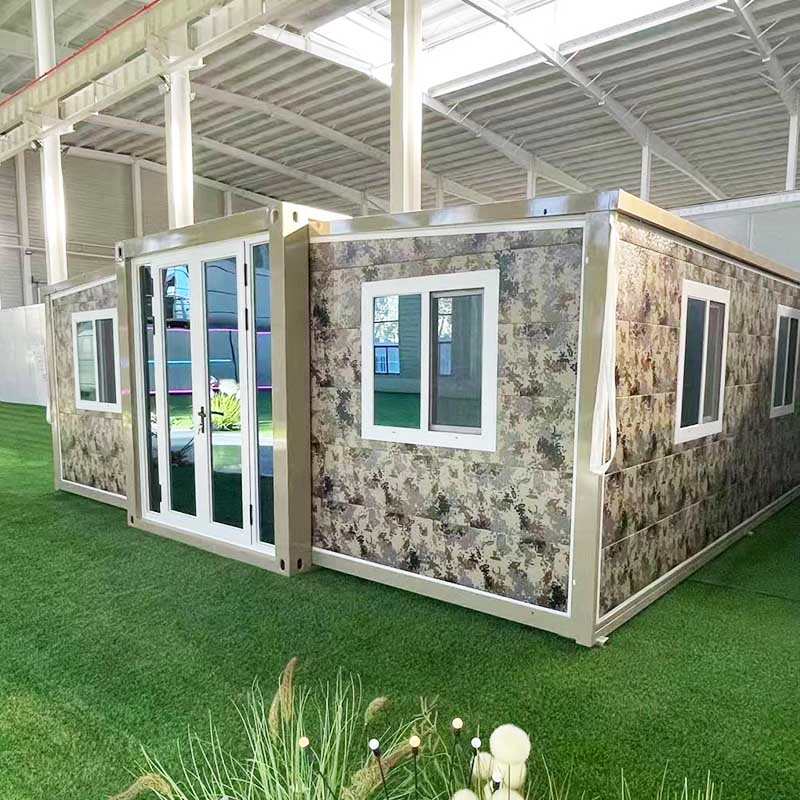Why Are Container Houses Becoming the Future of Modern Living?
2025-10-22
Container houses are increasingly reshaping the landscape of modern housing solutions. Combining sustainability, cost-efficiency, and rapid deployment, these modular structures offer a unique alternative to traditional construction methods. As urbanization accelerates and environmental concerns rise, container houses provide an innovative solution for residential, commercial, and emergency housing needs.
What Is a Container House and How Does It Work?
A container house is a prefabricated structure built using steel shipping containers. These containers, originally designed for cargo transport, are repurposed into livable or functional spaces. Their modular design allows for flexibility in size, layout, and purpose, making them suitable for both temporary and permanent applications.
Container houses are designed for durability and efficiency. Each unit is constructed with weather-resistant steel, insulated panels, and reinforced flooring to ensure comfort and safety. Advanced engineering techniques enable stacking and connecting multiple units, creating multi-story buildings without compromising structural integrity.
Key Features of Container Houses:
| Feature | Specification | Benefit |
|---|---|---|
| Material | High-grade steel, corrosion-resistant coating | Longevity and strength |
| Insulation | Polyurethane or EPS panels | Temperature regulation, energy efficiency |
| Dimensions | Standard 20ft or 40ft containers | Modular design and scalability |
| Roof & Flooring | Reinforced steel or composite panels | Load-bearing capacity and durability |
| Doors & Windows | Customizable steel frames with glass panels | Natural lighting and ventilation |
| Transport & Installation | Easily transportable with cranes or trucks | Quick deployment and relocation |
Container houses function by combining modular units, allowing customization of interior spaces such as living areas, kitchens, bathrooms, and office setups. Advanced plumbing, electrical systems, and climate control can be integrated, offering a level of comfort comparable to conventional buildings.
Why Are Container Houses Gaining Popularity Worldwide?
The increasing popularity of container houses is driven by several factors, including cost-effectiveness, environmental sustainability, and speed of construction.
Cost-Effective Housing Solution
Traditional construction often involves high labor costs, long timelines, and material waste. Container houses, in contrast, significantly reduce expenses by repurposing existing containers and employing modular construction methods. Prefabrication allows for bulk production of standardized components, further lowering costs.
Environmentally Friendly Option
With rising concerns over environmental sustainability, container houses offer a green solution. Reusing shipping containers minimizes waste and reduces the carbon footprint associated with conventional construction. In addition, energy-efficient insulation and solar panel integration enhance eco-friendliness.
Rapid Deployment and Flexibility
Container houses can be deployed in days or weeks rather than months or years. This makes them ideal for emergency shelters, remote construction sites, and temporary housing during urban development projects. Modular stacking allows for multi-story designs without requiring extensive foundation work.
Future Urban Living
The trend toward smaller, more flexible living spaces has positioned container houses as a forward-looking solution. Urban planners are increasingly considering modular container communities to address housing shortages, while businesses adopt container structures for pop-up offices, retail shops, and cafes.
How Do Container Houses Meet Modern Living Needs?
Container houses are not only structurally sound but also customizable to meet diverse lifestyle requirements. Their adaptability allows integration into urban, suburban, and rural environments.
Design Flexibility
Container houses can be configured into single units or combined into multi-unit complexes. Interior design options range from minimalist layouts to luxury finishes, providing homeowners and businesses with tailored solutions.
Safety and Durability
Constructed from high-grade steel, container houses are resistant to natural disasters such as earthquakes, strong winds, and floods. Advanced insulation ensures thermal comfort, while reinforced flooring and secure locking systems enhance safety.
Technological Integration
Modern container houses can incorporate smart home systems, solar energy panels, rainwater collection, and energy-efficient HVAC systems. This integration transforms a basic container into a fully functional and sustainable living space.
Common Questions About Container Houses
Q1: How long does it take to construct a container house?
A1: Construction of a single unit typically takes 2–4 weeks, including insulation, electrical setup, plumbing, and interior finishing. Multi-unit projects may require additional time depending on complexity, but modular design ensures faster deployment than traditional buildings.
Q2: Are container houses suitable for extreme climates?
A2: Yes, with appropriate insulation, roofing, and ventilation, container houses can perform efficiently in extreme heat, cold, or humidity. Optional features like double-glazed windows and HVAC systems enhance climate adaptability.
What Are the Advantages of Choosing Container Houses and Future Trends?
Container houses offer a combination of affordability, mobility, and sustainable living. Their modular nature allows for endless customization, making them ideal for residential, commercial, and emergency use.
Advantages Over Traditional Housing
-
Cost Savings: Reduced labor, material, and construction time.
-
Eco-Friendly: Reuse of materials and integration of renewable energy.
-
Flexibility: Easily expandable, relocatable, or reconfigurable.
-
Durability: High resistance to natural disasters and structural fatigue.
Future Trends in Container Housing
-
Urban Modular Communities: Cities are exploring container housing for affordable, space-efficient urban development.
-
Smart Container Homes: Integration with IoT devices and sustainable energy systems will enhance convenience and efficiency.
-
Hybrid Designs: Combining containers with traditional materials to create aesthetically appealing and functional structures.
As container housing continues to evolve, companies like Yilong are leading the industry in providing high-quality, customizable, and eco-friendly solutions. Their focus on innovation ensures that each container house meets modern living standards while remaining cost-effective and sustainable. For inquiries about product customization, detailed specifications, or purchasing options, contact us to explore the full range of container housing solutions.



